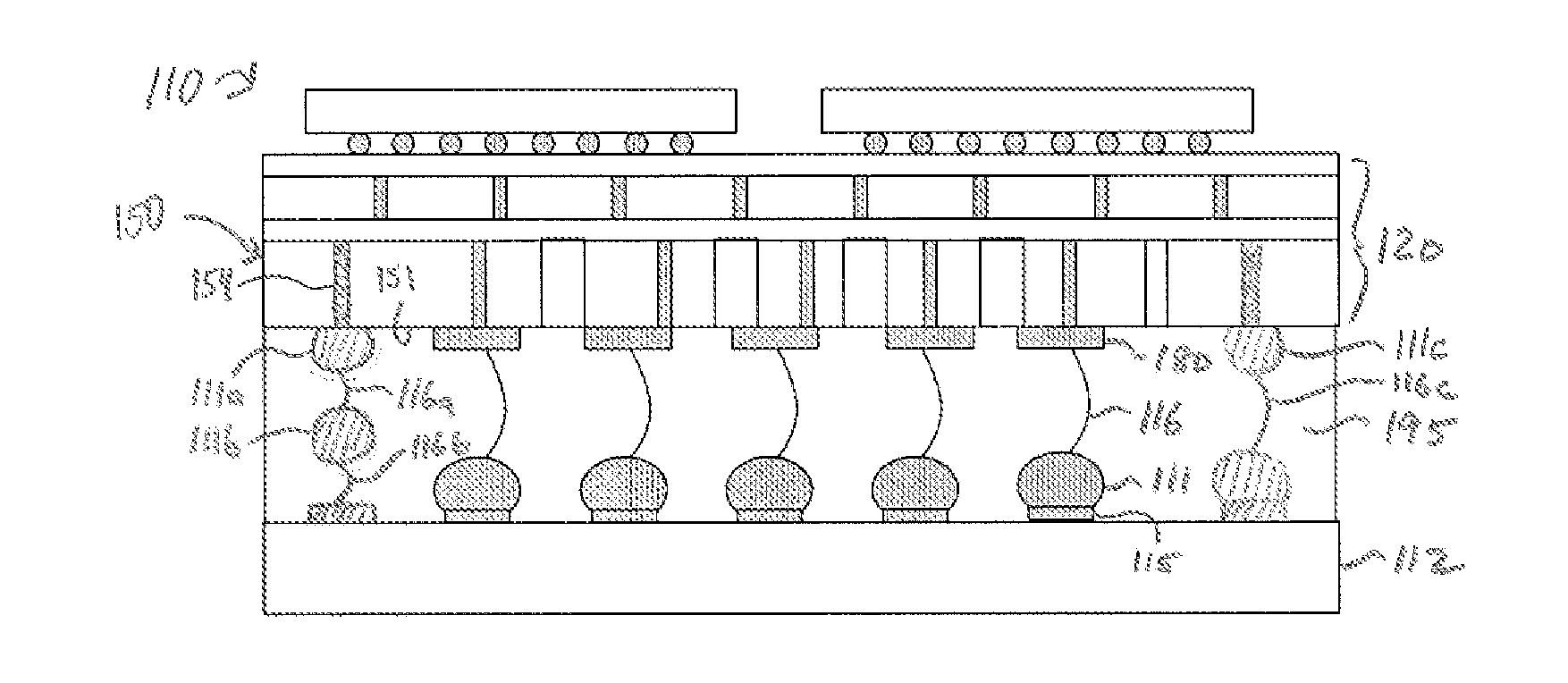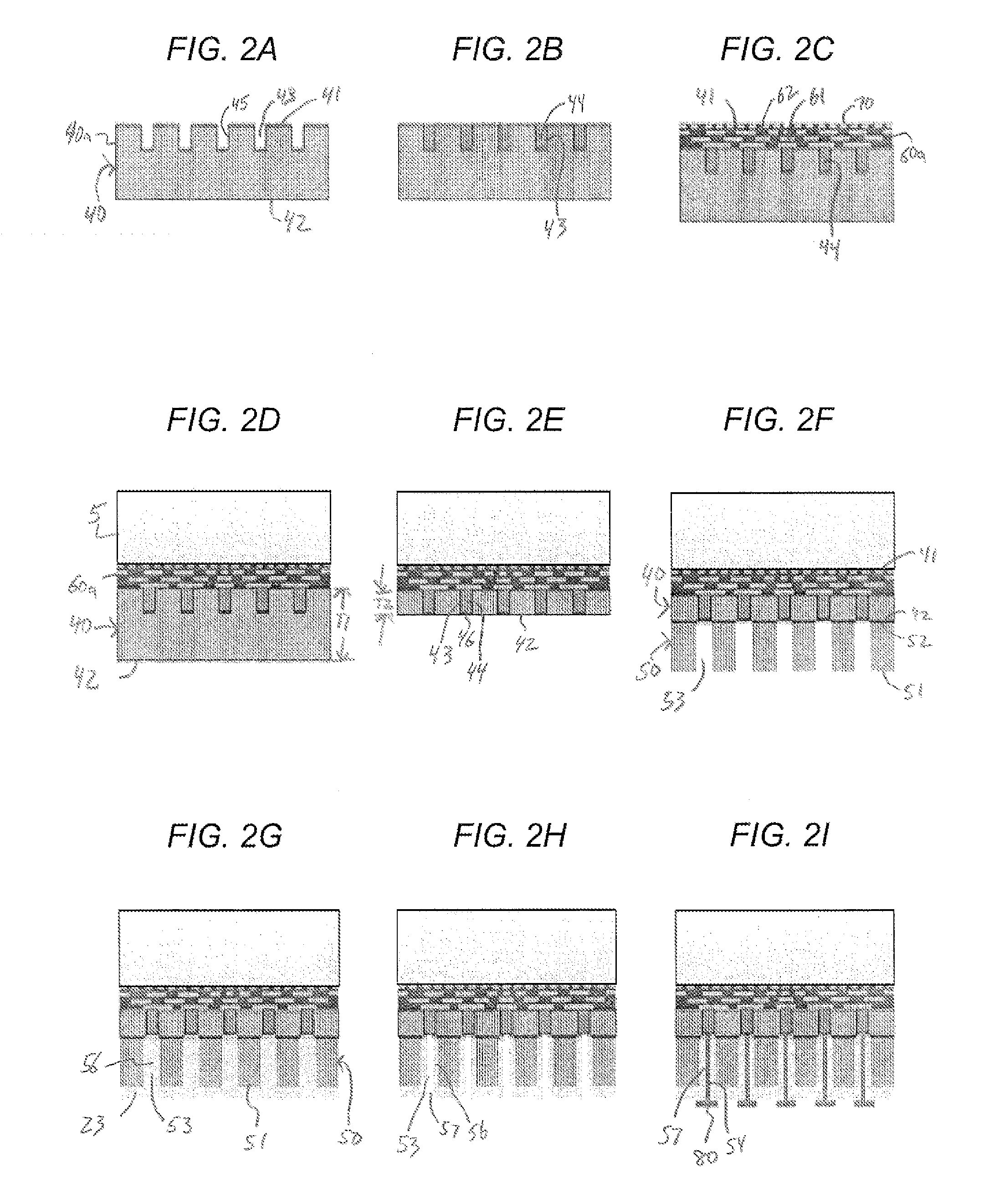Tunable composite interposer
- Summary
- Abstract
- Description
- Claims
- Application Information
AI Technical Summary
Benefits of technology
Problems solved by technology
Method used
Image
Examples
Embodiment Construction
[0048]As illustrated in FIG. 1A, a microelectronic assembly 10 can include an interconnection element 20 having a first surface 21 and a second surface 22 opposite therefrom, one or more microelectronic elements 30 assembled with the interconnection element, an encapsulant 90 at least partially covering the microelectronic elements 30, and a circuit panel 12 assembled with the interconnection element.
[0049]In FIG. 1A, the directions parallel to the first surface 21 are referred to herein as “horizontal” or “lateral” directions, whereas the directions perpendicular to the first surface are referred to herein as upward or downward directions and are also referred to herein as the “vertical” directions. The directions referred to herein are in the frame of reference of the structures referred to. Thus, these directions may lie at any orientation to the normal or gravitational frame of reference. A statement that one feature is disposed at a greater height “above a surface” than another...
PUM
 Login to View More
Login to View More Abstract
Description
Claims
Application Information
 Login to View More
Login to View More - Generate Ideas
- Intellectual Property
- Life Sciences
- Materials
- Tech Scout
- Unparalleled Data Quality
- Higher Quality Content
- 60% Fewer Hallucinations
Browse by: Latest US Patents, China's latest patents, Technical Efficacy Thesaurus, Application Domain, Technology Topic, Popular Technical Reports.
© 2025 PatSnap. All rights reserved.Legal|Privacy policy|Modern Slavery Act Transparency Statement|Sitemap|About US| Contact US: help@patsnap.com



